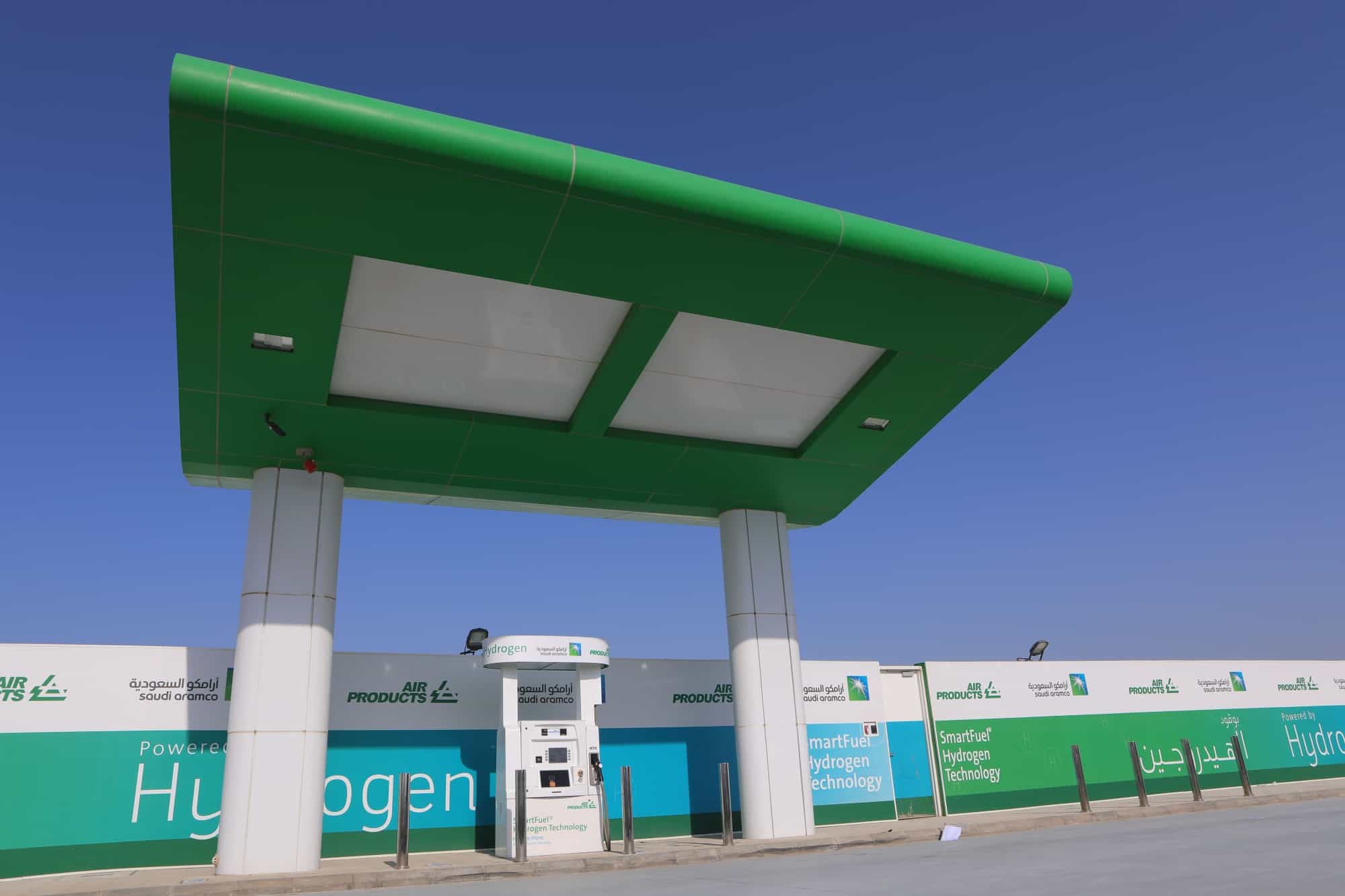Green hydrogen production in the Kingdom: Ambitious plans to lead the sector

There is no doubt that green hydrogen will be an essential element in the success of the energy transition, not only in Saudi Arabia but worldwide. For this reason, the wise government, led by the Custodian of the Two Holy Mosques King Salman bin Abdulaziz Al Saud, and his trustworthy Crown Prince launched its ambitious national strategy for hydrogen leadership. It has set a broad goal to acquire the largest share of the clean hydrogen market in the world by 2030.
Green hydrogen was seen as a future energy source with great potential, and it is usually produced from water using an electrolyzer that works with renewable sources, and it can operate fuel cells, which convert hydrogen directly into clean electricity; This allows energy to be stored and transported from distant renewable energy stations to global markets. Green hydrogen can also be converted into synthetic fuels and other energy carriers, such as green ammonia.
With such a wide variety of uses and high energy content, it is believed that green hydrogen will play a central role in decarbonizing hard-to-mitigate industries such as heavy industry and transportation, and helping countries achieve their net zero goals. For the Kingdom, it is estimated that green hydrogen could generate revenues of up to $35 billion by 2050 and create up to 250,000 jobs.
Green energy and hydrogen production
The Kingdom of Saudi Arabia has a broad plan to develop and produce green hydrogen and take advantage of it as an advantage to reach net zero carbon emissions by 2050, and according to energy analysts, green hydrogen can not only fuel the transportation sector in the country but can also be used in many other fields. Such as heating, cooking, power generation, and others.
Given its unique resources, infrastructure, and territory, Saudi Arabia seeks to be the world’s largest supplier of hydrogen, primarily using hydrocarbons, along with capturing and storing carbon emissions, as a key means of diversifying its export profile away from crude oil in an increasingly carbon-constrained world.
The Kingdom has goals for producing clean hydrogen, amounting to 2.9 million tons annually by 2030, and 4 million tons annually by 2035.
Green hydrogen production in the Kingdom
The government of the Custodian of the Two Holy Mosques intensified its efforts to support and develop the hydrogen industry in the Kingdom. To achieve economic efficiency, improve consumption efficiency, and lead in global energy markets. Perhaps the green hydrogen production project and its use in the city of “NEOM” is the first step towards the Kingdom’s leadership of the hydrogen market in the world.
The advantages of the green hydrogen production project in the city of NEOM are not limited to providing job opportunities for Saudi citizens, male and female, but it also works to enhance the Kingdom’s capabilities in the manufacture and production of green hydrogen, in addition to maximizing the diversification of the Kingdom’s economic base and reducing carbon emissions, according to the goals of the Kingdom’s Vision 2030. According to reports by the Ministry of Energy, the NEOM project will reduce carbon dioxide emissions by three million tons annually.
The project aims to produce 650 tons of green hydrogen per day, starting in 2025, and it embodies the Kingdom’s ambitious plan to diversify away from oil and natural gas and presents NEOM as a global center for green technology and energy.
Saudi capabilities for hydrogen production
Reports issued by the Ministry of Energy, in the middle of last year, indicate that the Kingdom of Saudi Arabia is seeking to become the country that has the largest share of the clean energy market in the world by producing green hydrogen; Especially since the northwestern shores of the Kingdom enjoy a suitable climate for its production. Where the sunshine is available throughout the year and the wind, through which solar panels and windmills can be operated.
As for blue hydrogen, the Kingdom seeks to produce it by separating the methane molecule in natural gas and sequestering carbon, and to enhance these production opportunities, the Kingdom’s government recently announced that it will allocate a gas field for this purpose.
According to officials of the Ministry of Energy, Saudi Arabia hopes to attract investments of more than $36 billion by 2030, within the framework of its national hydrogen strategy, which is being finalized during the current period, and that strategy focuses on the main elements of the value chain, including production, exports, Domestic use of clean hydrogen, and from an industry perspective focused on the infrastructure and transportation sector.
Saudi-Korean Cooperation to produce green hydrogen
In a first-of-its-kind step, the Saudi Public Investment Fund signed, in November of last year, a memorandum of understanding with the Korean Electric Power Company (KEPCO), the Korea Southern Electricity Company, the Korean National Oil Company, POSCO Holdings, and Samsung C&T; With the aim of building and operating a plant for the production of green hydrogen and ammonia in the city of Yanbu in the Medina region.
According to the reports of the Ministry of Energy, the project, which is being built on an area of 396,694 square meters in the city of Yanbu, will be built between 2025 and 2029 and will be operated for only 20 years. It is expected to produce about 1.2 million tons of green hydrogen and ammonia annually, valued at about $6.5 billion.
Saudi-Greek Cooperation for hydrogen production
In another endeavor to enhance production opportunities, the Kingdom of Saudi Arabia and the Republic of Greece confirmed – within the framework of the recent official visit conducted by His Royal Highness Prince Mohammed bin Salman; Crown Prince and Prime Minister, to Greece – the strategic cooperation between them in the field of hydrogen, including low-carbon hydrogen, green hydrogen, as well as promoting cooperation in applying circular carbon economy approaches and technologies.





